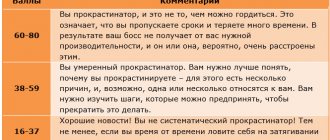Application of transactional analysis
English psychiatrist Eric Berne became the founder of psychoanalysis, understandable to any person.
Transactional analysis is a highly effective method of psychotherapy for:
- increasing your own efficiency;
- awareness and change of life attitudes;
- personal growth;
- solving personal problems;
- addiction treatment.
Transactional analysis describes social interaction simply and clearly.
From the outside it may seem that Berne's analysis is similar to a simplified version of Freud's psychoanalysis. Similar, but not very much. Freud was able to structure the human world into a relatively understandable space, but Berne pointed out that all of his ego states (Parent, Child, Adult) have different behavior, thinking and emotions and was able to establish a reliable connection between them.
Analysis Concepts
Behavioral patterns in Berne's concept indicate that people perform specific roles copied from their parents, or performed by them in childhood, with all the accompanying thoughts and feelings. It is this model of the relationship between the Adult, the Child and the Parent living in each of us that Berne uses to analyze the various aspects of the personality and the methods of its communication.
The other two pillars of Berne's theory are the theory of child development, which is associated with the concept of life script, and the theory of games.
In the case of the life script concept, Berne believes that in childhood, a child writes his life script, before he even learns to speak, and then adds additional touches and parts to it, which are reinforced by his parents. It should be taken into account that the child writes the script of life because it seems to him the most correct strategy for survival in a world where he is almost helpless. It is because of this that any attempt to change a child’s idea of the world seems to a person to be a threat to life, which leads to involuntary distortions in the perception of reality, ignoring facts in favor of one’s children’s ideas.
TA helps in the treatment of a wide variety of psychological problems
In the case of game theory, we become hostages of feelings that have become substitutes for natural ones, and were encouraged by our parents and resolved by them in our childhood. Such substituted feelings are called racketeering or false. Games that often occur between people lead to the fact that both sides of communication experience false feelings.
When playing games, people do not understand that they are captured by false ideas and are ruining their own lives.
Read “Transactional Analysis in Psychotherapy”
Eric Bern
Transactional analysis in psychotherapy © Gruzberg A., translation into Russian, 2015
© Design. LLC Publishing House E, 2015
Instead of an introduction
First you need to get acquainted with the terminology that you will encounter in this book, where a lot of attention is paid to individual and social psychiatry.
Social psychiatry
denotes the study of the psychiatric aspects of a transaction or set of transactions that occurs between two or more individuals. Comparison of psychiatric problems among different social, cultural, or national groups, sometimes also called "social psychiatry," may be better and more accurately labeled "comparative psychiatry."
He
often denotes a person in general, regardless of gender.
Is
in context means “usually, to the best of the author’s knowledge.”
Seems
to mean “I think this is true, but I don’t have enough data to be completely sure.” Specific people are referred to as “adult,” “parent,” and “child.” When these terms are capitalized: Adult, Parent, Child, they refer to ego states rather than specific individuals. Accordingly, the adjectives “adult”, “parent” and “child” are written with a capital or lowercase letter according to the context.
The term "psychoanalysis" and its synonyms in this book refer to what is known as "orthodox psychoanalysis", that is, the resolution of childhood complexes and conflicts through the systematic use of free association, where the therapist works with the phenomena of transference and resistance in accordance with Freudian principles . It is worth bearing in mind, however, that after fifteen years of marriage the psychoanalytic movement and the author parted amicably (remaining on the most friendly terms) and that the author's concept of ego functions differs from that held by most orthodox psychoanalysts.
Introduction
The Ego state can be described phenomenologically - as a coherent system of feelings in relation to a specific subject and operationally - as a set of behavior patterns; or pragmatically - as a system of feelings that motivates a corresponding set of behavioral patterns. Penfield[1] demonstrated that the memories of epileptics in their natural form appear as ego states. By electrically stimulating the temporal cortex on both sides, he was able to produce these phenomena.
Penfield further demonstrated that two different ego states could exist simultaneously in consciousness as separate psychological entities, clearly distinct from each other. In one case of such a “forced” secondary experience as a result of electrical stimulation, the patient exclaimed that he heard someone laughing. However, the patient himself “was not inclined to laugh at a joke, no matter what it was. He was thus aware of two simultaneously existing situations. His exclamation indicates that he was aware of the incompatibility of these two situations - one present and the other evoked in his mind from the past. Although, when such a memory is recalled in the patient’s mind, “it seems to him to correspond to the present moment.” And only when it passes, he is able to recognize it as a vivid memory from the past. At the moment of stimulation, “the patient is both actor and audience.”
Penfield, Jasper and Roberts emphasize the difference between such complete memories, that is, the awakening of complete ego states, and isolated phenomena that arise from stimulation of the auditory and visual centers, or memories of words. They especially note that cases of temporal lobe stimulation involve important mental elements, such as understanding the meaning of what happened and the emotions that it once caused.
Kuby, in his comments on this experiment, notes that the patient is both observer and observed and that what we have before us is “a complete recollection, including what the patient is not able to remember consciously, and approaching the completeness of recollection that can sometimes be achieved under hypnosis." The past becomes as compelling and vibrant as the present. Verbal memory serves as a sifting screen through which sensory memories of past experiences pass. It is appropriate to quote Cobb's remark from the same collection that “the study of emotions is now a legitimate medical pursuit,” which he connects with the physiology of the most ancient areas of the cerebral cortex.
Psychologists are well aware that ego states can persist. Federn was one of the first to emphasize that psychological reality is based on complete and discrete ego states. Weiss describes ego states as "the actual experienced reality of the mental and physical Ego in relation to a particular period of life." In this regard, Federn speaks of “everyday” ego states.
Weiss, the main interpreter of Federn, precisely formulates that the Egos of previous age levels are preserved in a potential state. This is well proven clinically by the fact that “such ego states can, under special conditions, be secondarily endowed with libidinal energy, for example in hypnosis, sleep and psychosis.” He also notes that "two or more separate ego states may attempt to maintain unity and consciously exist simultaneously." According to Federn, suppression of traumatic memories or conflicts is possible in many cases only by suppressing the ego states related to these experiences. Early ego states remain latent, awaiting the opportunity to be again endowed with libidinal energy. And this has a direct bearing on the problem of “personality.”
Weiss speaks of “a residual infantile ego state in the adult which usually retains libidinal energy but may be deprived of it,” a kind of “childish ego.” On the other hand, there is another type of influence, which Weiss calls “psychic presence.” It is a “mental image of another ego,” sometimes a parent, that influences the individual’s emotions and behavior.
There are other authors whose works deal with ego states, but the quotations given are sufficient to draw the reader's attention to this phenomenon. Structural and transactional analyzes - the subject of this work - are based exclusively on clinical observations and work with patients, and all prejudices and preconceived opinions are set aside. Under such conditions, the study of complex ego states emerges as a “natural” approach to psychology and psychotherapy.
Part I
Individual Psychiatry and Structural Analysis Chapter 1
General Considerations 1. Rationale
Structural and transactional analyzes offer a systematic, coherent theory of personality and social dynamics, derived from clinical experience, and an effective therapy that most patients readily accept and naturally use.
Psychotherapeutic treatment can be presented in two types: in the first case, suggestion, reassurance and other “parental” methods are used; the second or “rational” approach is based on methods of confrontation and interpretation, such as non-directive psychiatry and psychoanalysis. The “parental” approach suffers from a major drawback: it ignores or suppresses the patient’s archaic fantasies, and ultimately the therapist often loses control of the situation and is himself surprised and disappointed by the outcome of the treatment. The rational approach is designed to establish control from within; with conventional methods this can take a very long time, and in the meantime not only the patient himself, but all his relatives and those around him are subject to the results of his unreasonable behavior. If the patient has young children, taking too long to achieve positive treatment results can have a decisive impact on the character development of these children.
The structural-transactional approach overcomes these difficulties. Because it tends to quickly increase the patient's ability
What transactional analysis teaches
It is important to talk about the worldview that transactional analysis fosters. This is a fundamentally positive view of the world. He claims that you and I are OK and worthy of respect, we have value as individuals.
We should not adapt to each other, and even if our points of view do not converge, then this is just a difference in views, it does not change the main point about our equality. We have the right to the actions we choose and must be held accountable for them. We can and should change if we think it's right. Even if we are under pressure from circumstances, only we have the right to decide whether to submit to this pressure or not, because only we are responsible for our lives.
By getting to know ourselves, we change old patterns of behavior that interfere with a free life and interfere with our health and happiness.
Call us, we will help!
Transactional analysis (transactional analysis) - pseudoscience or an effective technique for improving life?
Feel yourself in a parallel universe. Or how some luminaries in the popularization of science manipulate the facts and claim that transactional analysis is a pseudoscience and supposedly still remains at the level of just a hypothesis for the effective direction of psychotherapy and personal coaching options.
In addition, let's talk a little about the standards of evidence-based medicine and how to distinguish a normal study from a low-quality one.
I will try to explain everything in as simple a way as possible, but sometimes I get a little carried away.

